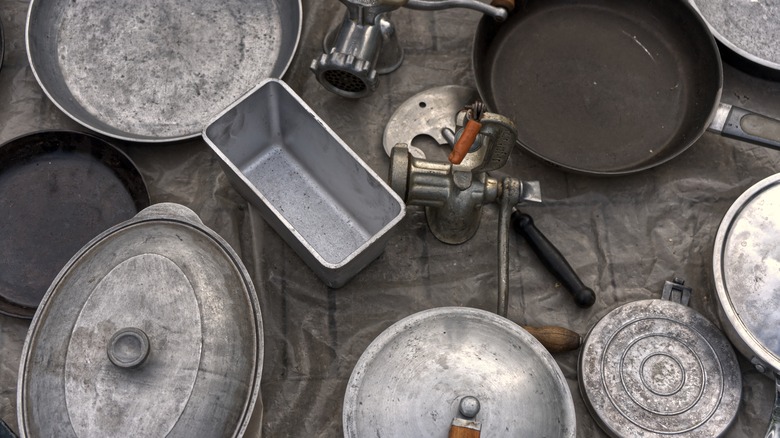Turn This Baking Staple Into A Chic Vintage Planter
Vintage bakeware is all too often overlooked for other uses in the home outside the kitchen. This is particularly true with vintage pans, which usually possess a well-worn and rustic charm that can't be replicated by other sorts of newer containers. A great opportunity for using some of those old pans is turning them into modern-day planters long after their usefulness in the kitchen has passed. Loaf pans, usually reserved for bread and meatloaf are particularly useful for use as planters due to their depth, which can accommodate root systems of smaller plants like succulents. With a few modifications for drainage, you can create the perfect small planter from an everyday loaf pan.
Vintage and antique loaf pans are often more beautiful than the basic ones found in the cookware aisle today, often boasting embossed metal designs and the deep patina that comes with decades of use. They are perfect for use as a small planter on a desktop, coffee table, or narrow windowsill since they take up less space than round planters and can fit a varied selection of small plants. They also make stunning space-conserving centerpiece arrangements when dining. These upcycled planters are a perfect addition to rooms with a farmhouse, shabby chic, or cottagecore décor style.
Using a loaf pan as a planter
Vintage loaf pans can often be readily found at thrift stores, flea markets, and estate or garage sales. You can also purchase a new inexpensive loaf pan at and age it by leaving it outside for a few days to achieve a patina. This hack is also a great opportunity to upcycle a loaf pan already in your cupboard that has seen better days. You can fill your pan with soil, pebbles, moss, and other materials that will provide a nutrient-rich berth for the small plants you place inside.
To ensure adequate drainage for small plants, drill several holes in the bottom of the pan. For planting small succulents that don't need quite as much water, you can add a mix of charcoal and perlite at the bottom to create an entirely self-contained drainage system. The long length of the loaf pan allows you to plant several small plants of various heights and varieties after adding your base soil. Add moss and pebbles on top in between the plants to fill in any empty spots.

